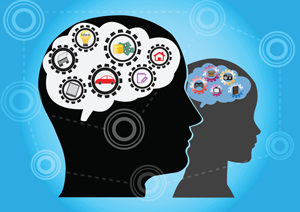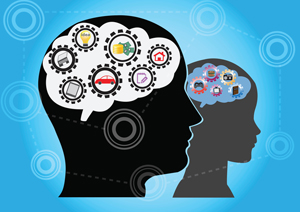
Students need strong critical thinking skills to read and write effectively in high school and college. Furthermore, many jobs require employees to think critically to analyze data, choose the best course of action and act on their choices. The earlier students cultivate critical thinking, the more skilled they will be at producing sophisticated, thoughtful analyses of the challenges they face.
 Like any academic skill, critical thinking requires a great deal of practice. Try these exercises in your class to help improve your students’ capacity for critical thinking.
Like any academic skill, critical thinking requires a great deal of practice. Try these exercises in your class to help improve your students’ capacity for critical thinking.
Assign free writes to connect with other course work
After introducing new content or concepts, teachers should assign students free writes that draw connections to other materials or classes. They should begin by determining how the new information connects to what they already know, which will ultimately strengthen their memory.
Once students learn to see how the material connects, they’ll get better at recognizing relationships between ideas that aren’t necessarily correlated on the surface.
Start analyzing and assessing ideas
The next major component of critical thinking is analyzing and assessing the validity of facts and ideas. Have your students actively engage with course material to:
- Determine the main ideas.
- Draw connections with other material.
- Assess whether the ideas are valid and logical.
The goal is to push students to think critically about the text at hand to determine how valuable and useful it is.
Use stories to draw connections
When analyzing and assessing, teachers can ask students to practice on a text that they are familiar with to help them understand the process. For example, teachers can start by asking students to tell a common story in our culture.
Some examples might include the Tortoise and the Hare, Cinderella or the Three Bears. While these stories are fairly well-known, there are many versions or adaptations out there, so students will probably know slightly different versions. Ask students to consider where they learned the version they know and its overall moral or message. Next, have students think about how the origin of the story influences the moral or how it is told.
Connect stories to related concepts
Once students understand the story’s basic meaning, ask them to draw connections outside the story by getting them to identify stories that have a similar message or plot.
Next, ask them to consider:
- Why are these similarities important?
- What about the story is problematic? Unrealistic?
- How well is the message conveyed?
In this stage of critical thinking, students interact directly with the text to determine how valid the ideas are and whether they are conveyed in a manner that is easy to follow.
Finally, if possible, introduce additional texts that provide new information or concepts students can use to analyze the original text. This process lets students determine the overall significance of the original source material.
Once you’re done with this part of the process, ask students what they still want to know or find out, and have them suggest why they are unclear.
Embrace active learning
One of the major goals of teaching critical thinking is turning students into active learners. Students often engage passively with material, or they learn it without truly thinking about it and connecting it with what they already know. It’s important to forge these connections because you’re creating pathways in the brain that enhance memory.
More significantly, though, learning to think critically will help students examine information and not take it at face value. They will be able to draw upon current knowledge, summarize and synthesize the information at hand, and determine whether it is factual, valuable and relevant.
Ultimately, critical thinking is an important skill both in the classroom and in almost any career. Students who can think critically can learn to analyze data sets, detect problems or patterns, develop marketing plans that reach the ideal audience, or engineer new products that represent creative solutions.
Caitrin Blake has a BA in English and Sociology from the University of Vermont and a master’s degree in English literature from the University of Colorado Denver. She teaches composition at Arapahoe Community College.
